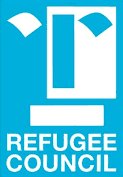Canada is a popular destination for tourists and business visitors alike. One of the essential requirements for entering Canada is the Electronic Travel Authorisation (eTA). This page provides a comprehensive overview of the Canada eTA, how it works, who needs it, and the application process.
The Canada Electronic Travel Authorisation (eTA) is a mandatory entry requirement for visa-exempt foreign nationals who are flying to or transiting through Canada. The eTA is electronically linked to the passport of the traveler and is valid for up to five years or until the passport expires, whichever comes first. It allows multiple entries to Canada for short stays, generally up to six months at a time.
Not all travelers to Canada require an eTA. It is specifically for visa-exempt foreign nationals traveling to Canada by air. Citizens of countries that do not need a visa to enter Canada, such as the United Kingdom, Australia, France, and Germany, among others, need to obtain an eTA before boarding their flight to Canada. U.S. citizens are exempt from this requirement but U.S. permanent residents (Green Card holders) need an eTA to fly to Canada.
Those entering Canada by land or sea, such as by car or cruise, do not need an eTA. However, they must carry proper travel documents and identification. Additionally, Canadian citizens, including dual citizens, and Canadian permanent residents do not need an eTA. If you hold dual citizenship and plan to fly to Canada, you must travel with a valid Canadian passport.
Applying for a Canada eTA is a straightforward process that can be completed online. Here’s a step-by-step guide on how to apply:
In some cases, an eTA application may be denied. This could be due to various reasons, such as past immigration issues, criminal records, or discrepancies in the information provided. If your eTA application is denied, you will receive an email explaining the reason for the denial. You may still be eligible to apply for a visitor visa, which involves a more detailed application process and additional documentation.
If you believe your eTA was denied in error, you can contact the Government of Canada’s immigration office to seek clarification or provide additional information to support your application. In some cases, it may be possible to resolve the issue and obtain an eTA upon reapplication.
Once you have obtained your eTA, you are ready to travel to Canada. At the airport, you will be required to present your passport to the airline staff, who will verify that you have a valid eTA before allowing you to board your flight. It’s important to ensure that the passport used for the eTA application is the same one you present at the airport, as the eTA is electronically linked to your passport.
Upon arrival in Canada, a border services officer will ask to see your passport and other travel documents. The officer will verify your identity and check that you meet the entry requirements. In most cases, travelers with a valid eTA and proper documentation are allowed to enter Canada without issue.
If your passport expires before the five-year validity of your eTA, you will need to apply for a new eTA with your new passport. Additionally, if you change your name, gender, or nationality, you must apply for a new eTA to reflect these changes.
It’s important to keep your eTA information up-to-date to avoid any issues when traveling to Canada. If you are unsure whether your eTA is still valid or need to make changes, you can check your eTA status on the Government of Canada website.
Most eTA applications are approved within minutes, but it’s recommended to apply at least 72 hours before your flight to allow time for processing.
The eTA is for short-term visits only. If you plan to work or study in Canada, you will need to apply for a work permit or study permit.
If you realize that you made a mistake on your application, you will need to submit a new application. The initial application fee is non-refundable, so ensure all information is accurate before submitting.
Yes, as long as your eTA and passport are valid, you can enter Canada multiple times during the eTA’s validity period.
No, the eTA is only required for travelers entering Canada by air. If you are entering by land or sea, you do not need an eTA, but you must carry proper identification.
The Canada Electronic Travel Authorisation (eTA) is an essential requirement for many travelers visiting Canada. Understanding the application process, entry requirements, and how to maintain your eTA can ensure a smooth and hassle-free trip to Canada. Whether you are visiting Canada for tourism, business, or to visit family and friends, obtaining an eTA is the first step in your journey.
+44 (0)3301 222 991





